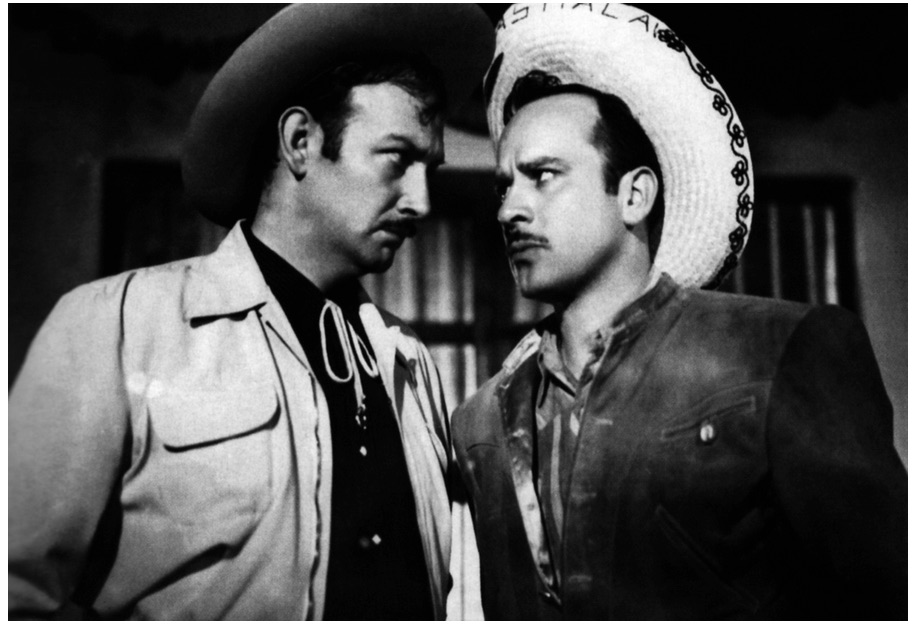 I am completing the final edits of a chapter, “YouTube as Archive: Fans, Gender and Mexican Film Stars Online” for a book entitled Revising Star Studies edited by Guy Austin and Sabrina Yu. In the chapter I’m exploring what it means to access YouTube in order to carry out star fan studies and to gain an understanding of the the star text. Previously, I published on the Mexican film stars, María Félix and Dolores del Rio. This time I’m considering three of their male contemporaries, Pedro Infante, Jorge Negrete and Emilio Fernández. My decision to do this was in response to the call for papers for the conference Guy and Sabrina organised in the University of Newcastle, because I have spent some time trying to work through the differences and this was the perfect opportunity to do this and build on my earlier work. I was curious to see whether there were points of comparisons between Félix and del Rio and Infante, Negrete and Fernández. What I found can be read in the chapter after it is published. But, here I wanted to share some of the vids I looked and why they are worth reflecting on in an academic context.
I am completing the final edits of a chapter, “YouTube as Archive: Fans, Gender and Mexican Film Stars Online” for a book entitled Revising Star Studies edited by Guy Austin and Sabrina Yu. In the chapter I’m exploring what it means to access YouTube in order to carry out star fan studies and to gain an understanding of the the star text. Previously, I published on the Mexican film stars, María Félix and Dolores del Rio. This time I’m considering three of their male contemporaries, Pedro Infante, Jorge Negrete and Emilio Fernández. My decision to do this was in response to the call for papers for the conference Guy and Sabrina organised in the University of Newcastle, because I have spent some time trying to work through the differences and this was the perfect opportunity to do this and build on my earlier work. I was curious to see whether there were points of comparisons between Félix and del Rio and Infante, Negrete and Fernández. What I found can be read in the chapter after it is published. But, here I wanted to share some of the vids I looked and why they are worth reflecting on in an academic context.
Whilst with Félix and del Rio, the fans altered original content and thereby created original vids that resulted in fascinating readings of the star text. Click on their names for two examples that I discussed in the earlier article, and then follow the links that will inevitably come up when you do that. In contrast, the fans of the male stars were more interested in the following types of vids:
Infante and Negrete both released multiple records as well as appearing in many musicals, therefore a large number privilege music over visual mash-ups. These two which blend songs accompanied by simple slideshow style images by El Yeusy “Pedro Infante y Jorge Negrete_Coplas_Couplets” and Juan Pablo Rosas García “pedro infante y jorge negrete super mix”, and this extract from a comedia ranchera, Nain DeLaCruz “Pedro Infante & Jorge Negrete – Dos tipos de cuidado” are common examples.
Experiments
Creative aestheticised pieces are rare, but here is a good example by the experimental filmmaker, Gérard Courant, “Emilio Fernandez by Gérard Courant – Cinématon #187”. Here is an amateur version by MoviePosterMM “Emilio Fernández”, which is a compilation of all of available posters from films starring Fernández accompanied by music from The Wild Bunch (Sam Peckinpah, 1969).
Star deaths and funerals
Here’s one of Pedro Infante’s death, omrobleto 1 “Muerte de Pedro Infante”. Pedro Infante: Pedro Infante (2009) “Pedro Infante”. Although, some Infante fans claim that he did not die in the 1950s, but lived on and provide video ‘proof’, Cuco Leyva Channel has a whole channel dedicated to this.
Houses
There are a number of visits to houses where the stars have lived. These are either official tours or amateur tourist home movies. For examples of amateur films: Akshairg (2007) “casa de Pedro Infante”, EstacionesMusicales (2011) “GUANAJUATO PLACA Y CASA DE JORGE NEGRETE 26 NOVIEMBRE”, and professional films, IMCINE n.d. “Casa Fortaleza de Emilio “El Indio” Fernández”.
Interviews
Interviews are popular. These can be from footage drawn from television, documentaries or radio. Sometimes they are slightly altered with musical accompaniments, but rarely are the visuals changed. Examples include, edward fuente (2014) “EMILIO ‘INDIO’ FERNANDEZ entrevistado por Joaquín Soler Serrano 2 de 2” and another of Fernández when he was in jail for murder, Perez Verduzco, Guillermo “ENTREVISTA AL INDIO FERNANDEZ EN LA CARCEL POR GUILLERMO PEREZ VERDUZCO”, with his daughter, Adela, Canal de laverdadentiemporeal “ENTREVISTA A ADELA FERNÁNDEZ, HIJA DE EMILIO ‘EL INDIO’ FERNÁNDEZ. Parte II”, and a television interview with Pedro Infante, Pedro Infante (2009) “Pedro Infante”.
These are but a sampling of what was available when I was carrying out my research and this post is a compilation for reference and intended to support the reading experience of the final chapter. In turn, when choosing the vids for analysis in the chapter I could only select a small number from amongst this rich variety. This indicates the need for more cross media convergence. How can the chapter be supplemented by what lives online and vice versa? For me, the study of these forms of fan creativity has great potential as an emerging area that could lead to fascinating inter-disciplinary and transnational discussions as well as being a challenge to how and where we can and should discuss this material.
